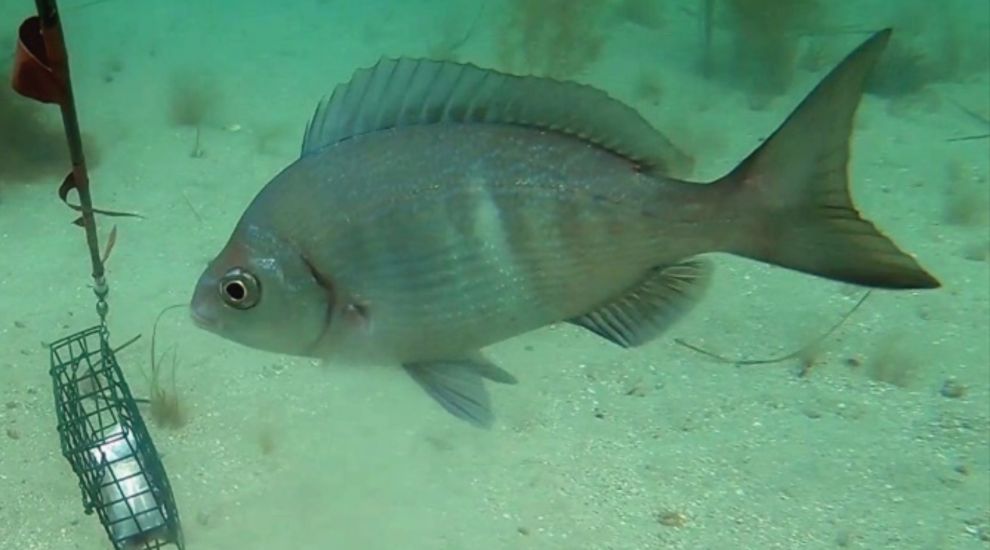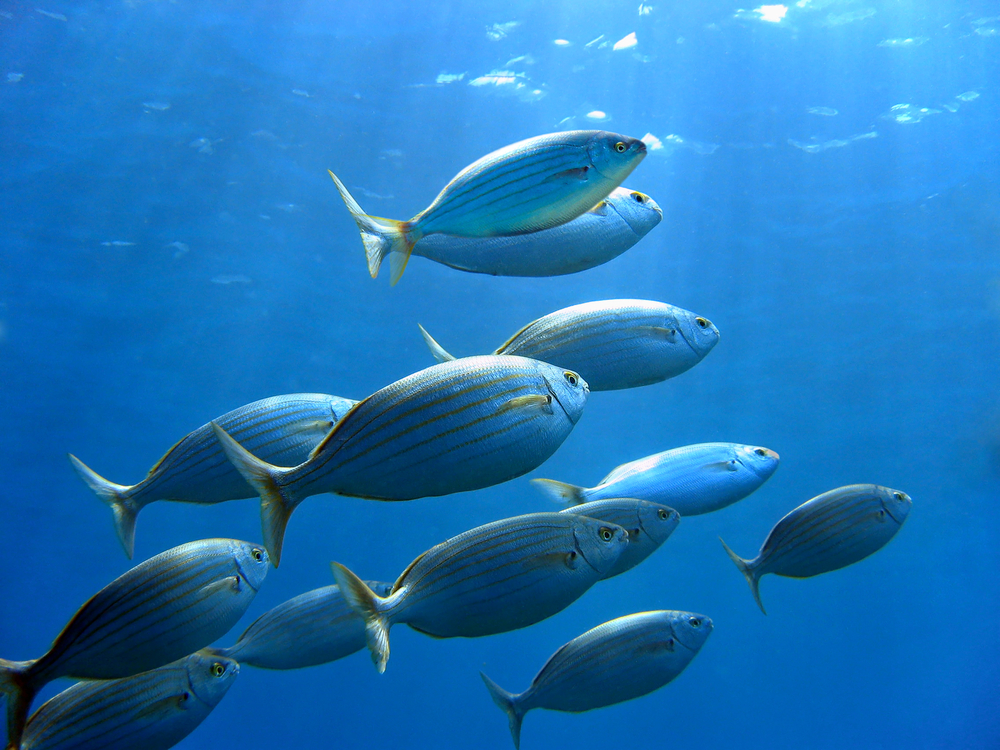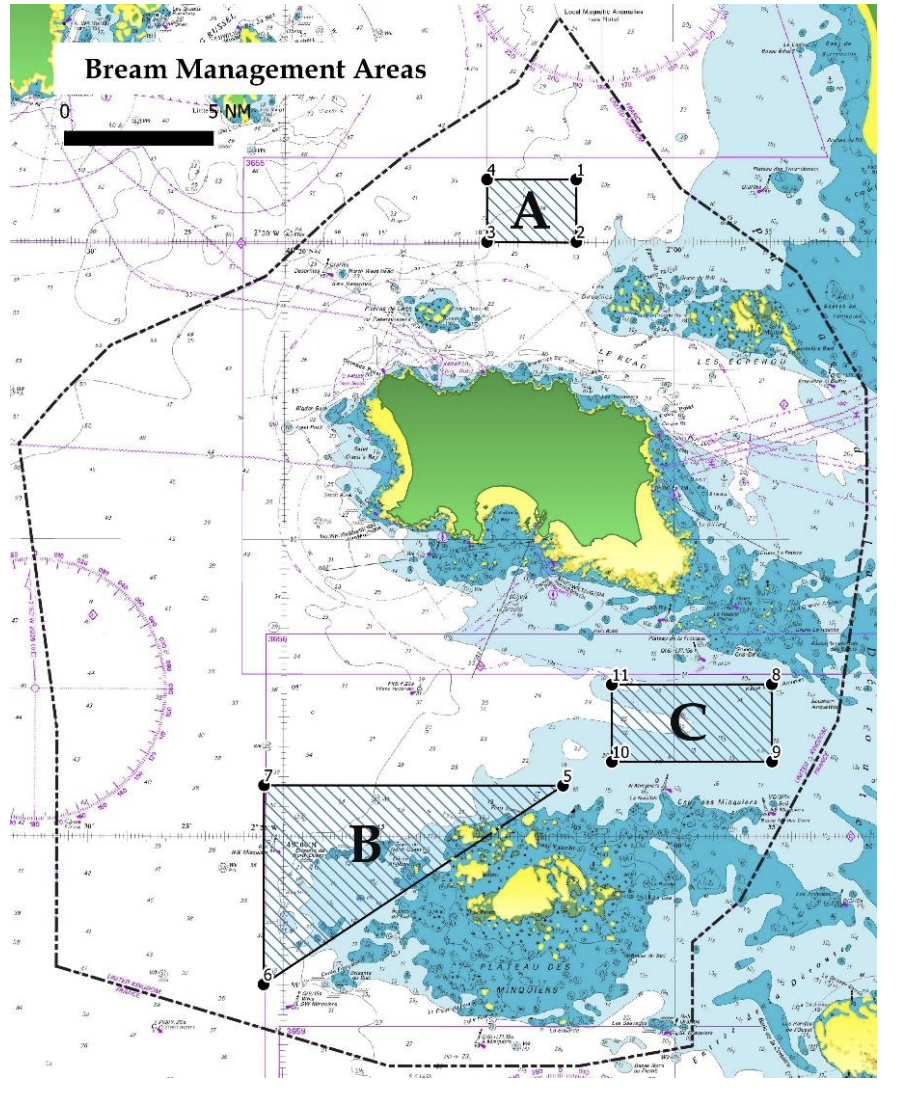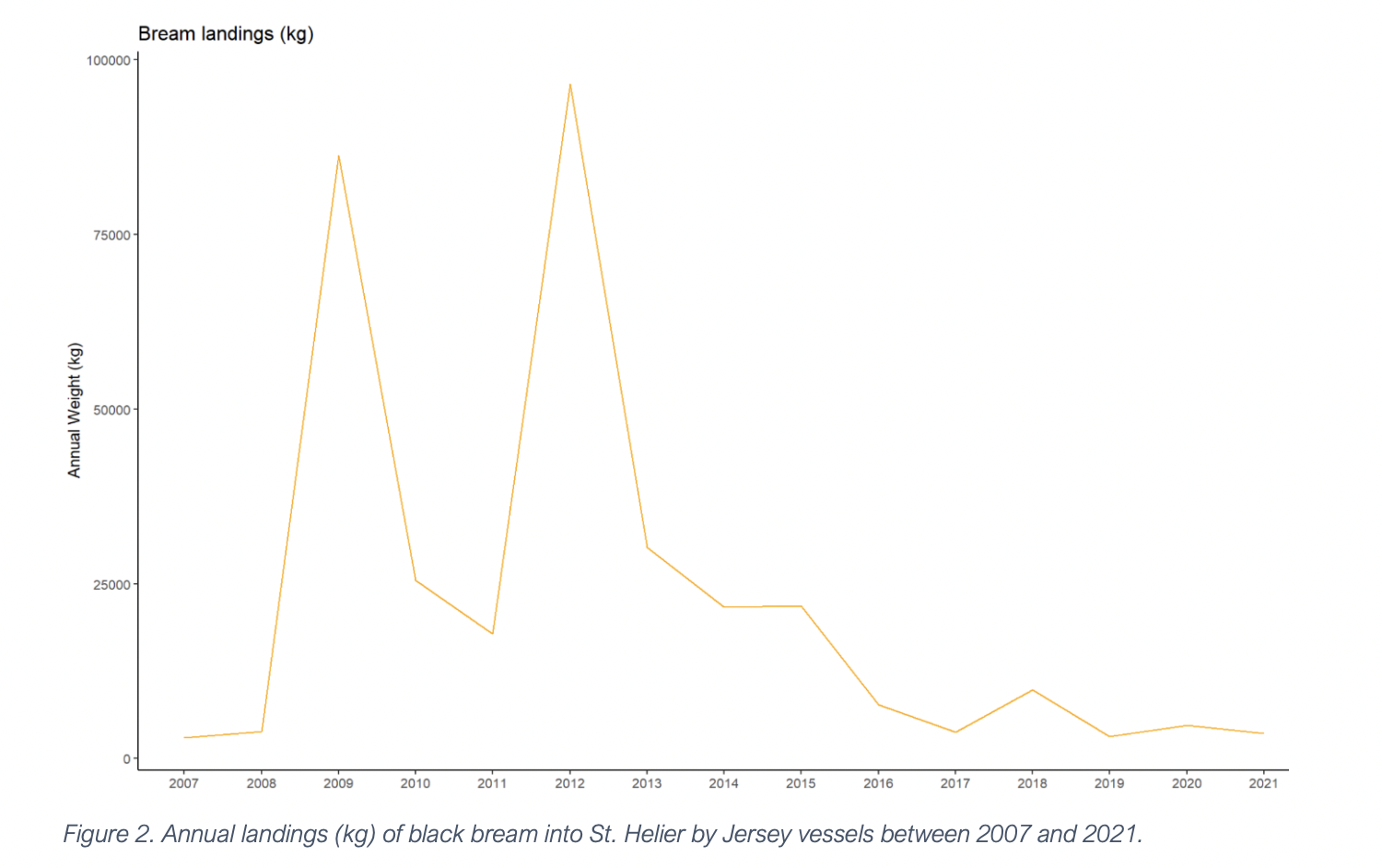


Daddy bream in Jersey waters already have a big job on their fins as they create nests, clear debris and chase off predators to protect their eggs during nesting season every year – but the vulnerable fish are facing an even bigger existential threat, which local marine experts are hoping they can help fend off...
Express took a deep-dive into the results of a recently published study...
French vessels were at the time catching large amounts of bream using a fishing method called pelagic or mid-water trawling, sometimes where two vessels drag a large net between them.

Pictured: The study has suggested closing "key nesting sites" to protect populations of bream while they spawn to help the next generation of fish
At the time, Jersey's fishing community had raised concerns about nesting sites being damaged due to this method and recommended they be closed to mobile gear towed by fishing vessels during the nesting season.
As it turned out, there was very little research – actually, none at all – about their nesting habits in local waters.
Jersey's Environment Department sought to fill that gap with a study using tech borrowed from the UK in the hope of plugging that knowledge gap, understanding the scale of the threat, and also how to alleviate it.
The Marine Resources team understood that certain types of fishing boats were targeting bream nesting sites during their spawning periods.
The department knew they needed to get the evidence together to identify nesting sites and prove that some vessels were targeting these areas to be able to introduce measures to protect bream during the fish's breeding stages.
This is where the report comes in.
Every breeding season, male and female bream come together to spawn and carve out a circular area of about a metre in diameter. The female then lays her eggs in that nest.
Video: A male bream protecting his nest. (Natural England)
After that point, it's over to the 'daddy' bream to take on the role of nest 'guardian' until the little fish hatch out - a process involving chasing off predators and keeping the area clutter-free.
But large mobile fishing gear running the area - including various types of trawls, nets and dredges - can distract the nest watchers.
Worse yet, it can damage the nest and spread the eggs around, increasing the risk of predation.
As part of the research, three areas were closed to fishers using mobile gear: one at the southeast of Jersey, another at the northwest of the Minquiers and the main one at the north of the island.
The latter was previously the focus of an investigation in 2021 from the Government when a fishing boat from Granville attempted to access it despite the ban but was stopped by fisheries officers on board the Jersey fisheries protection vessel Norman Le Brocq.

Pictured: Bream Management Zones that were closed to trawling between 1 May and 13 June in 2021, and 14 March and 31st July in 2022. (Marine Resources)
The study employed various techniques to collect data, including tracking fishing vessels, using underwater videos, and conducting sonar surveys which use sound waves to map and study the ocean floor.
It found that nests of black bream – described as a "valuable species" that "particularly vulnerable to exploitation by both sport and commercial fishers" – are generally located in areas with a combination of small rocks and sediment, and are often found near larger rock formations.
Researchers also found that black bream nests were frequently situated near certain marine life, such as the fungus deadman's fingers and the invertebrate species horn wrack.
Multiple nests were identified in an area to the north of Jersey that was previously targeted by trawlers during the spawning season.
The study noted that the species had been targeted by both Jersey and French fishing vessels previously.
It said that landings by Jersey boats had "varied" over the years, but these had usually been below 2,500kg – and, more recently, under 1,000kg a year.
"In the years where bream landings have exceeded 8,000 kg (2009 and 2012), this was due to one boat targeting them with trawls, whereas typically they are caught through netting or angling in Jersey," the study explained.
The large spikes in the below graph, therefore, are explained by how one Jersey boat targeted bream in 2009 and 2012.

Pictured: Annual landings (kg) of black bream into St Helier by Jersey vessels between 2007 and 2021. (Marine Resources)
On the other hand, the report noted, "French vessels in Jersey waters were reported to vary between 100,000kg and 200,000 kg per year between 2015 and 2018."
That figure came from Ifremer – a state-run and funded French scientific organisation focused on marine science.
Most of the bream that was caught by these vessels pre-Brexit would have been taken to France to be sold, however, changes in legislation and increased red tape due to the UK's departure from the EU means that it is more difficult to do this.
Catches also reduced because the bream stocks had declined so it was more profitable to target other species.
In recent years, there's only been one French boat that has undertaken this type of fishing in these areas, meaning that only one French boat was affected when the initial temporary closures were brought in.
Any vessels that do catch bream are not dependent on it and when sites are closed they will just go in and target another species in a different location.
The study, which cost £3,500 to produce, has suggested closing "key nesting sites" – for several months during the spring/summer months – to protect populations of bream while they spawn to help the next generation of fish
It also recommended that the area should be protected from all mobile gear between April and late June, meaning that there will be no trawling or dredging during the breeding season, as management is to make sure that there are breeding there for the future.
Closing these sites will also mean that different types of fishing from other boats can go into that area at that time of year, while making mobile gear illegal will protect Jersey fisherman's pots and equipment from being damaged by trawling or dredging.
The Environment Minister will decide whether to temporarily close the sites and the Environment Department hope that the legislation will come into force next year.
The report has also recommended additional surveys to gain a more comprehensive understanding of the locations to make sure the right areas are closed at the right time of year.
The report can be read in full HERE.
Critical study begins to assess damage to Jersey's fish stocks
Comments
Comments on this story express the views of the commentator only, not Bailiwick Publishing. We are unable to guarantee the accuracy of any of those comments.